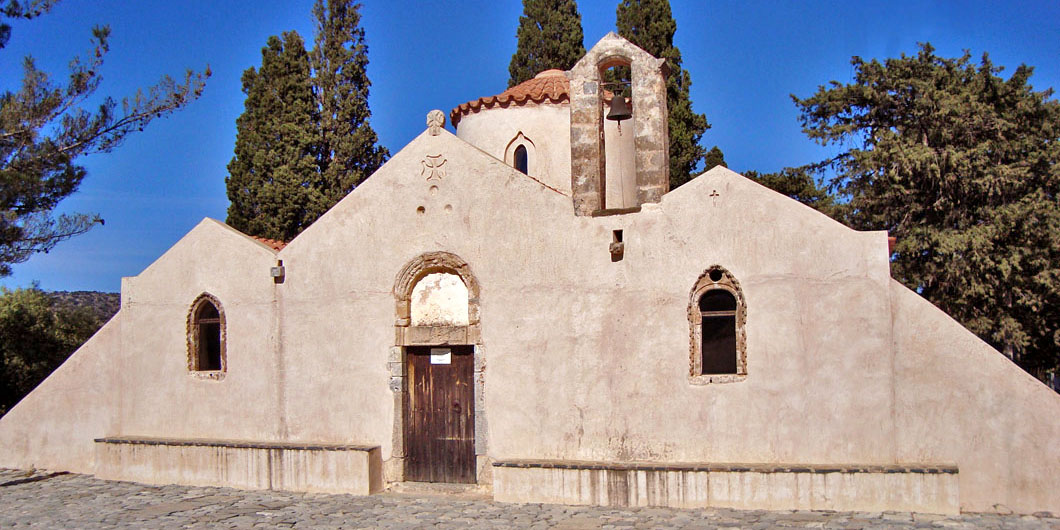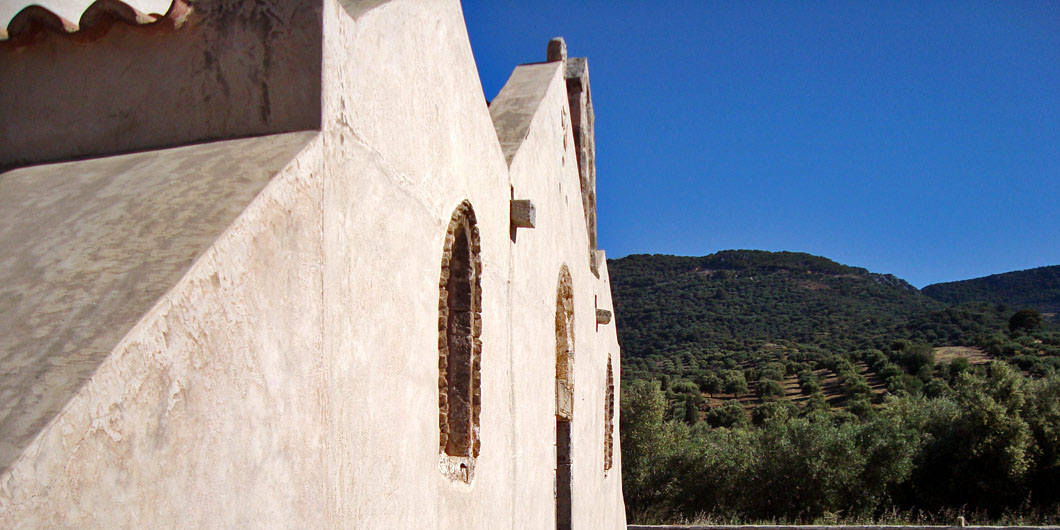The church of Panagia Kera (the Virgin) is located on the road that connects Agios Nikolaos with Kritsa, 1 km before the village of Kritsa, and it is considered as one of the most remarkable Byzantine monuments on the island of Crete.

It is a three-aisled church with a vaulted roof and a dome, full of wonderful Byzantine frescoes. Different phases of construction are visible. The nave, dedicated to the Virgin, is the oldest (13th century), while the two aisles were built later (14th century) and were dedicated to Saint Anna and Saint Anthony.
The frescoes adorning all three aisles of the church are well-preserved and typical of the various styles of ecclesiastical painting of the 13th, the 14th and the 15th century.
Parts of two layers of frescoes can be seen today in the nave. The oldest (13th century) survives fragmentarily, mostly inside the sanctuary and the drum that supports the dome; the figures were rendered in a linear style.
As it seems, the church was reconstructed after some disaster that occurred in the early 14th century; massive buttresses were added to it, three on the northern side and three on the southern side, in order to provide additional support for the dome.
The second layer of frescoes in the nave dates from this period. The vault of the heavens and four angels were represented inside the dome, according to Byzantine standards, while the Prophets and the Evangelists were painted lower down. Other compositions that stand out are the full-length, austere figures of Saint George and Saint Francis of Assisi, and the Crucifixion, on the lower section of the western wall, which also includes scenes from the punishment of the damned.

The southern aisle, dedicated to Saint Anna, is adorned with frescoes which are typical of the Palaeologan Renaissance, dating from the 14th century. The figures are represented in a more realistic and expressive way, while the main themes were derived from the life of Saint Anne and the Virgin. A large composition depicting the Second Coming dominates the northern aisle, while also remarkable is a representation of the donor Georgios Mazizanis (the person who provided for the creation of the frescoes) andhis family, wearing characteristic costumes of the time.
The large number of frescoes and the difference in styles used for the decoration of the church make it one of the most important Byzantine monuments of Crete.








